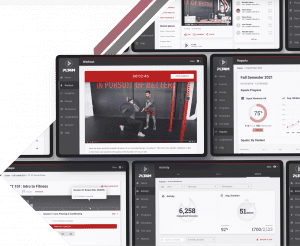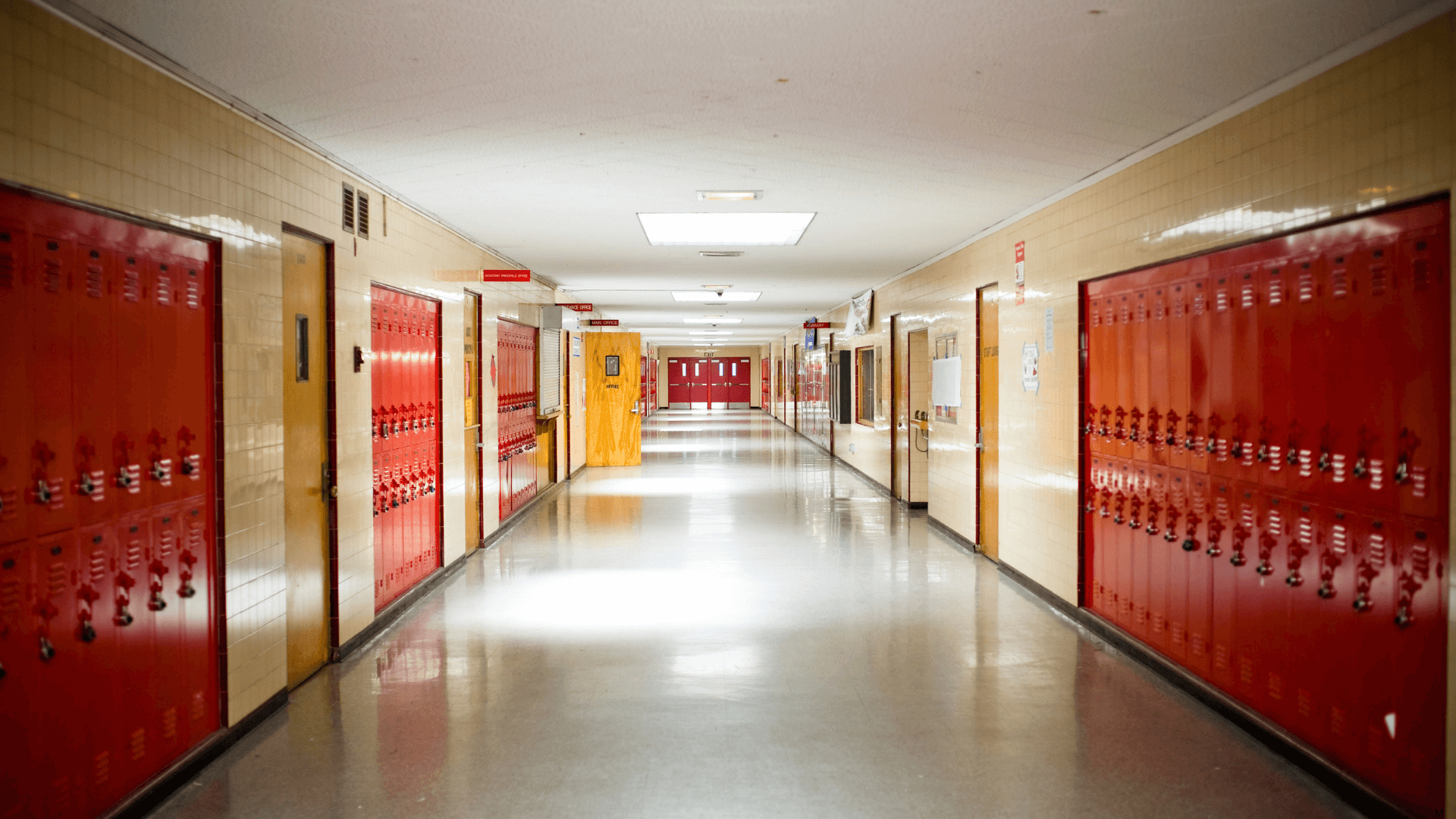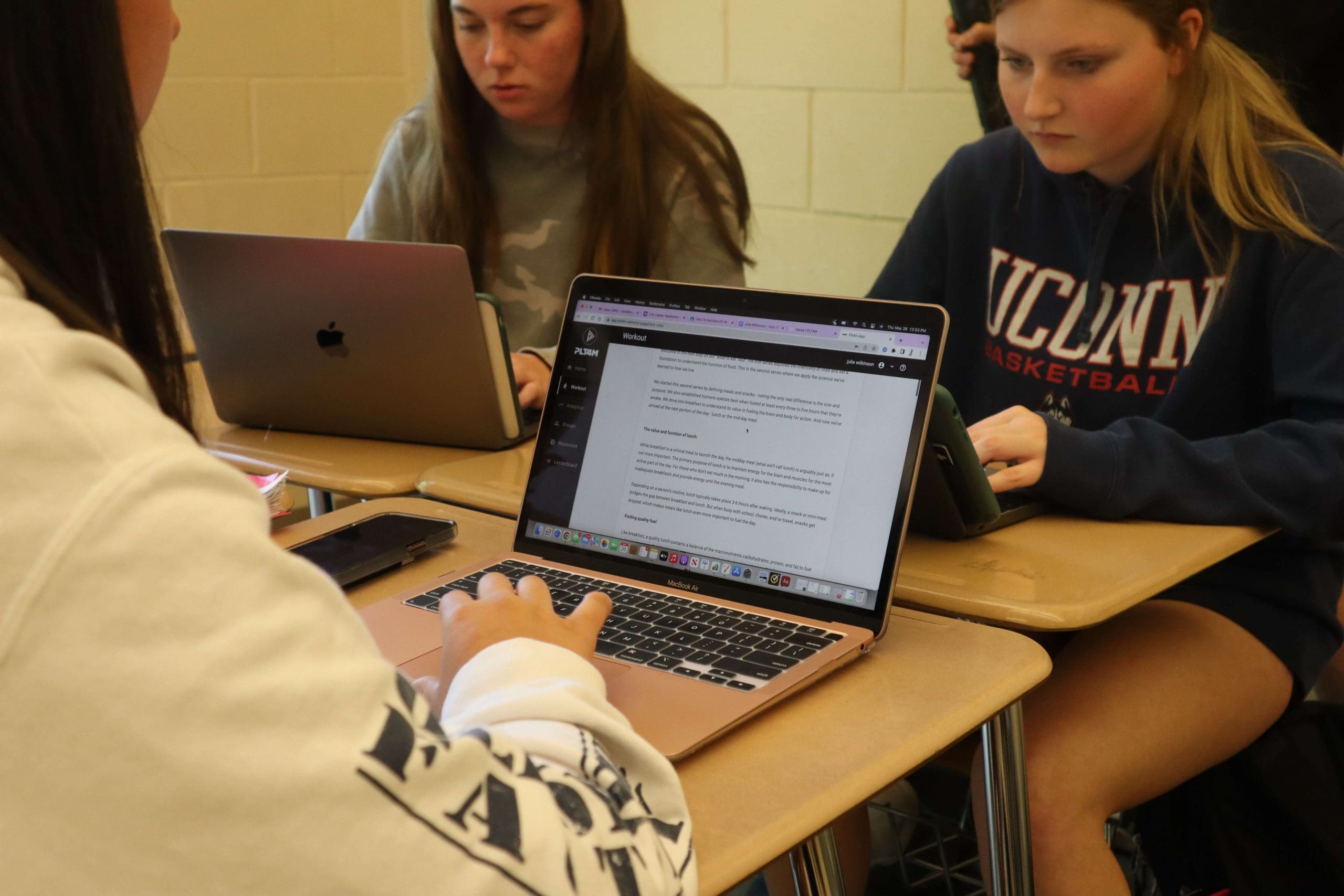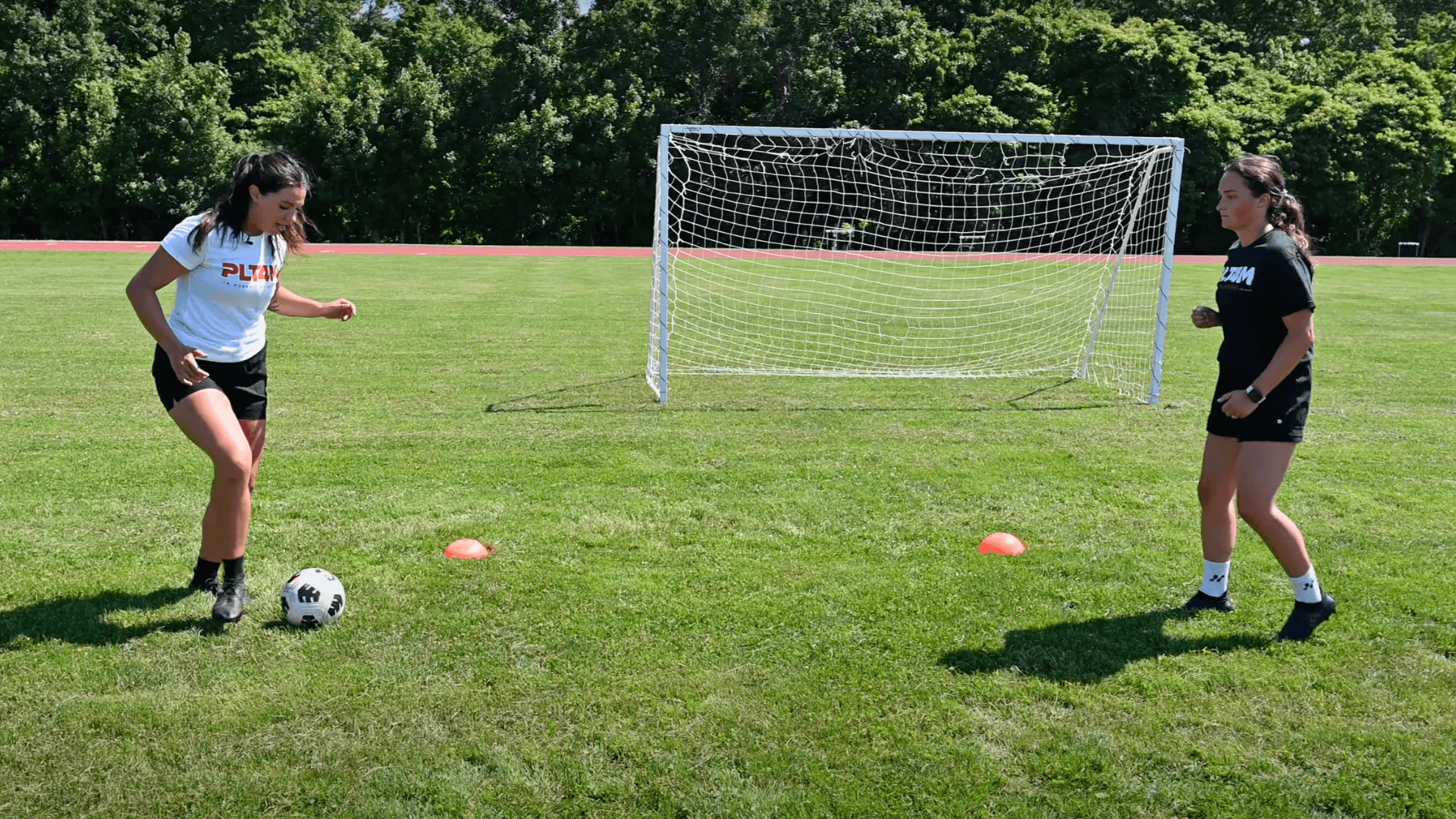Technology in the classroom is here to stay. We break down the top 5 benefits of technology in the classroom for PE. In addition, we draw from PE teachers’ experiences and how they relate to the top 5 benefits of technology in the classroom. Let’s dive in!
Evolution of Technology In The Classroom
As a teacher, you’ve inevitably been faced with the dilemma of whether or not to use technology in your classroom and to what extent.
Given the explosive growth of technology in the last two decades it is easy to feel like this is a new problem that has no good answer. But technology in education is not new. Rather, today’s technology is just the next evolution in a long progression of tools meant to improve student learning and enhance teacher effectiveness.
For example, the chalkboard was invented in 1801. Over the course of the next century it was rapidly adopted in classrooms across America due to its ability to allow teachers to educate larger class sizes simultaneously.
Then, in the early 1900’s, the mass production of pencils and paper revolutionized the classroom yet again. Modern pencils and paper replaced slate boards, making it far easier for students to generate a permanent record of their work.
Drawing parallels from these two examples we can see that the use of projectors and smart boards in classrooms today is just the latest generation of chalkboards, while the use of tablets and phones has evolved as the latest and greatest version of student centered learning devices.
So why are so many teachers apprehensive about today’s technology? Well, you may say that they didn’t have TikTok and YouTube in 1910. Fair point.
But the key is to understand the benefits and drawbacks of each piece of technology as it becomes available, and then weigh those against the impact it can have on student learning.
Top 5 Benefits of Using
Technology in Physical Education
Learn how physical education departments are benefiting from embracing technology in their classrooms
Technology In The Classroom Doesn’t Apply to Phys Ed Though, Right?
Physical education has long been the class where kids leave behind any “technology” used in other classes and focus simply on being active.
Teachers of physical education often pride themselves on being the class where technology isn’t allowed.
And while this can certainly be a good thing in some cases, closing the door on technology in physical education altogether risks seeing the rest of education pass us by.
Top 5 Benefits of Technology In The Classroom For PE
Ok – we’ve established that technology can be useful in the classroom. Let’s now take a closer look at the top 5 benefits of technology in the classroom for PE.
The top 5 benefits of technology in the classroom are:
- Increase student engagement
- Improve classroom efficiency
- Foster meaningful student collaboration
- Create a student centered learning environment
- Incorporate multiple learning styles
Ready to Learn More?
Schedule a free 10 minute consultation to see how the PLT4M system can help save you time, and empower student learning!
1) Increase Student Engagement
Finding ways to create an inclusive environment in P.E. has always been a challenge within the profession. While we have come a long way from target games like dodgeball, there is still work to be done.
And if engaging students was a challenge before Covid, teachers have found that across all subjects, the issue has only been exacerbated by extended isolation and remote learning over the last few years.
So, how can we improve student engagement through technology? First, it starts by being open to using it.
Researchers at Rochester Institute of Technology found that a technology-rich learning environment decreased failure rates and class withdrawals while improving learning. In fact, 90% of students involved cited that the tech-rich environment helped them learn and retain information better.
Since technology can be hard to incorporate into traditional game based units, creating additional units with a focus on fitness can open the door to meaningful tech integration.
For example, within each of PLT4M’s fitness offerings, there are established benchmarks that assess student competency, effort, and progress.
Kurt Foster, PE Teacher and Coach at John Glenn in Indiana, says that giving kids personalized insights has had a huge impact on student engagement.
“The buy-in from the younger students has gone up drastically. As kids, they love immediate feedback and seeing real-time results. Getting students to buy into PE is far easier with the use of technology and PLT4M.”
In Milwaukee, Wisconsin, Kyle Barth too, has seen the impact that data can have on student participation and engagement.
“The ability to see a graph that shows progress in a certain movement gets kids excited. Whether it’s over the course of a semester or a few years, kids love bragging about the progress they’ve made and that’s cool to see.”
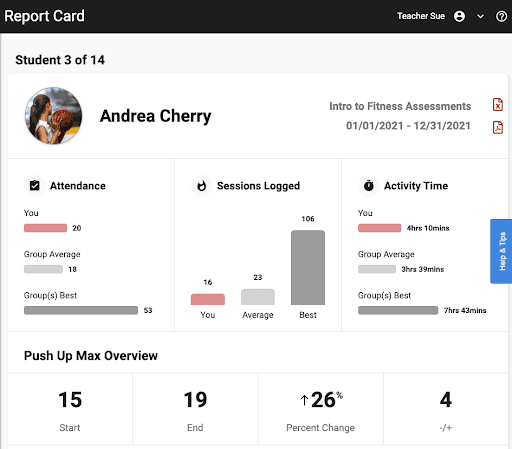
2) Improve Classroom Efficiency
For many PE departments across the country, time is a constant battle. Since kids have to dress down, class can be shortened by as much as 20 minutes. This means classroom efficiency is vital.
Kyle Barth at Milwaukee Lutheran in Wisconsin has found that giving students access to video instructions on their devices streamlines class. Rather than waiting behind a line of kids trying to get a question answered, students can reference their app.
“It makes my job as a teacher and coach easier. Students who may have questions throughout a class period or training session can first turn to their app and watch a video or read a description. I can focus my time and attention on students who may need more help with a movement and not feel bombarded by questions.”
For more advanced fitness classes that offer weight training, the impact can be even greater. Rather than having kids scribble down weight on index cards only to have to finger through folders to find them the next class, schools are now using different systems to automate weight assignments.
David Stoddard has taught P.E. in the state of Washington for close to 20 years. He now uses PLT4M, and finds that for students using weight training programs, the efficiency is simply too good to deny.
“The flow of the class is ten times better. Students can get everything they need right down to the weights and reps they should be doing for any movement assigned.”
Whether using an app like PLT4M, or a low tech tool like Google Sheets, the fact remains – tech can create efficiency within PE class in a number of ways that are hard to replicate otherwise.
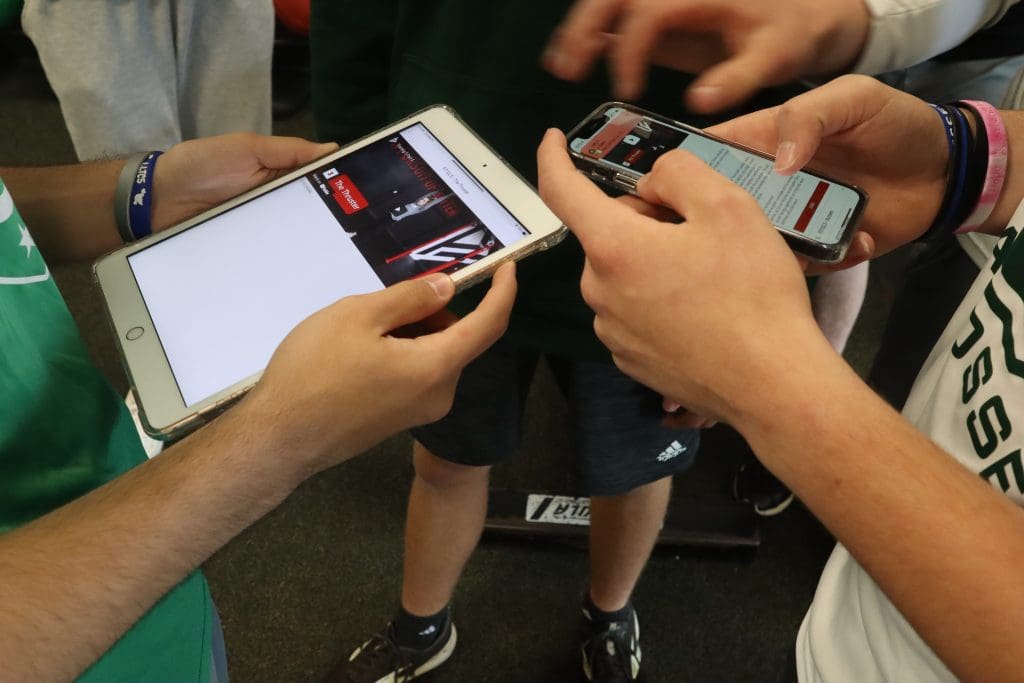
Top 5 Benefits of Using
Technology in Physical Education
Learn how physical education departments are benefiting from embracing technology in their classrooms
3) Foster Meaningful Student Collaboration
One of the most powerful aspects of a well rounded physical education is the ability to teach kids how to work together. Phys Ed’s role in this is only growing as SEL becomes more popularized across the country. It will remain important to put kids in situations to practice their Social and Emotional skills.
Game based P.E. modules have traditionally taken the lead when it comes to teaching teamwork and social skills in PE. While those will always have their place, they are not the only way to teach social skills and provide opportunities for collaboration.
David Stoddard and the staff at Quincy High School in Washington use technology and a peer-to-peer teaching model to accomplish this within their fitness and weight training units.
The teachers at Quincy High assign each student to a workout station, pairing 3-4 students from different grade levels. David explains the advantages of this structure:
“It allows the younger students to get more feedback from their peers and not just the teacher in the class. We go from one teacher in the classroom to many. And the older students benefit because they are reinforcing their own knowledge and skills through teaching.”
Kurt Foster at John Glenn in Indiana uses a similar approach. Despite every student having a Chromebook that they could use, Kurt pairs the students into groups.
They then use one device and the PLT4M Rack View feature to access their individualized workouts through the shared device. This is technology use at its best. Devices are minimized, teamwork is emphasized, yet personalized learning and data tracking are still accomplished.
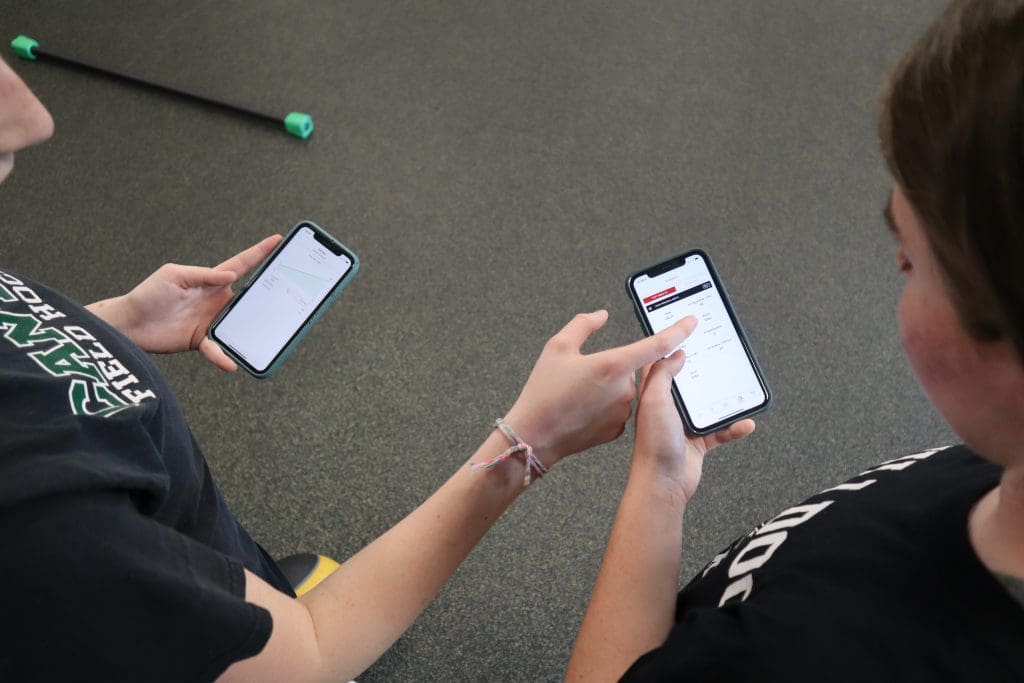
4) Create a Student Centered Learning Environment
If you haven’t heard of the term “student-centered learning”, you will soon. The principles behind it are quite simple. Students determine what they learn and how they learn it. Now, this doesn’t mean education becomes the wild wild west where anything goes, but it does give greater agency to students than ever before.
In SHAPE America’s first draft of their updated standards, the second principle is “Student learning is enhanced when teachers create a student centered learning environment”. It goes on to say that teachers who succeed in this principle will promote student agency through student choice.
So, how do we create student choice in Physical Education without the gymnasium turning into bedlam?
Using Fitness and Technology to Empower Student Choice
Adopting a more fitness focused approach, powered by technology is a natural solution. Fitness is by nature diverse. With options like Yoga, Cardio, Strength training, Dance, Boxing, Pilates, and more, there is no end to the options you can provide students. The trick is figuring out how to develop the curriculum and support resources, and then how to manage and implement it.
Enter technology.
Through apps like PLT4M, teachers can provide countless fitness courses that are delivered to students through 1-to-1 devices, or set up on projectors in different stations.
Steve Wagner, teacher of 37 years, used feedback from students indicating a desire for more choice and fitness options to overhaul his curriculum. The results have been nothing short of amazing.
“We never did yoga or dance before PLT4M, and now those are some of our favorites. We even created a space where we have a blow-up projector set up so students can do these different programs. It helps for students to know they don’t have to lift every class.”
In Idaho, Christi Meyer and Jessica Shawley deliver personalized fitness programs for use during class, and then open up modules like Nutrition, flexibility, and yoga for students to pursue on their own.
In Canton Massachusetts, the PE staff recognized that the traditional lecture model for the Health unit was losing the interest of the students. Since this is a required class however, it wasn’t something that students could just “choose” not to do.
So they adapted. They changed the way in which kids were allowed to learn the material. Using PLT4M, kids could read or watch the lesson, and discuss it with classmates. Then, class would end with a teacher-led Q&A.
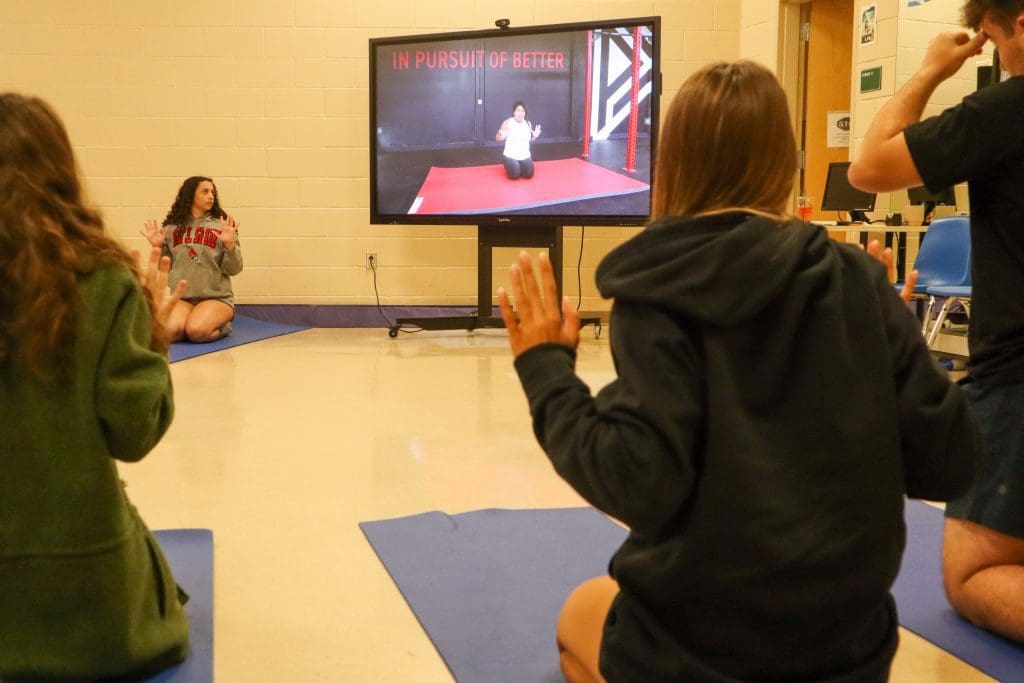
5) Incorporate Multiple Learning Styles
It is generally accepted today that not every student learns the same. Therefore, schools have shifted away from generalized pedagogical approaches and have begun to find ways to put students at the center of their own learning experience.
For example, some students are auditory learners while others are visual learners. Others are tactile learners, and some do better when allowed to read through the material on their own. Technology can allow teachers to provide more than one way for students to learn.
The Power of Video
Incorporating technology into PE class means we can leverage the power of video. When videos use subtitles, they offer visual, auditory, and written instructions, meaning more students will digest and retain the material in a meaningful way. Furthermore, using video allows teachers to offer lessons and education in areas where they may not be an expert.
Physical education may well be responsible for the broadest set of curricula in the school. From health to games, anatomy to fitness, sex ed to weight training, P.E. teachers are expected to know a bit of everything!
Admitting that you may not be an expert in every facet of the job is OK! This is where video can help fill the gaps.
In fact, a study from the University of Queensland found that the use of video in education fosters better mastery of the material, higher student engagement, and helps develop learning autonomy.
Two teachers in Idaho have put class videos to use with tremendous success. Christi Meyer, and Jessica Shawley (former SHAPE America TOY) use videos in their fitness classes to review key movements and coaching points before allowing students to begin the workouts individually.
Steve Wagner at Riley County uses videos to help him manage larger class sizes. Using the PLT4M app, students can access different workouts that pique their interest, and the videos embedded within the workouts ensure proper movement education.
““We tell the kids to watch the videos and listen intently. It has improved form, technique, and safety. We feel like we have several assistant coaches/teachers in the room at all times.”
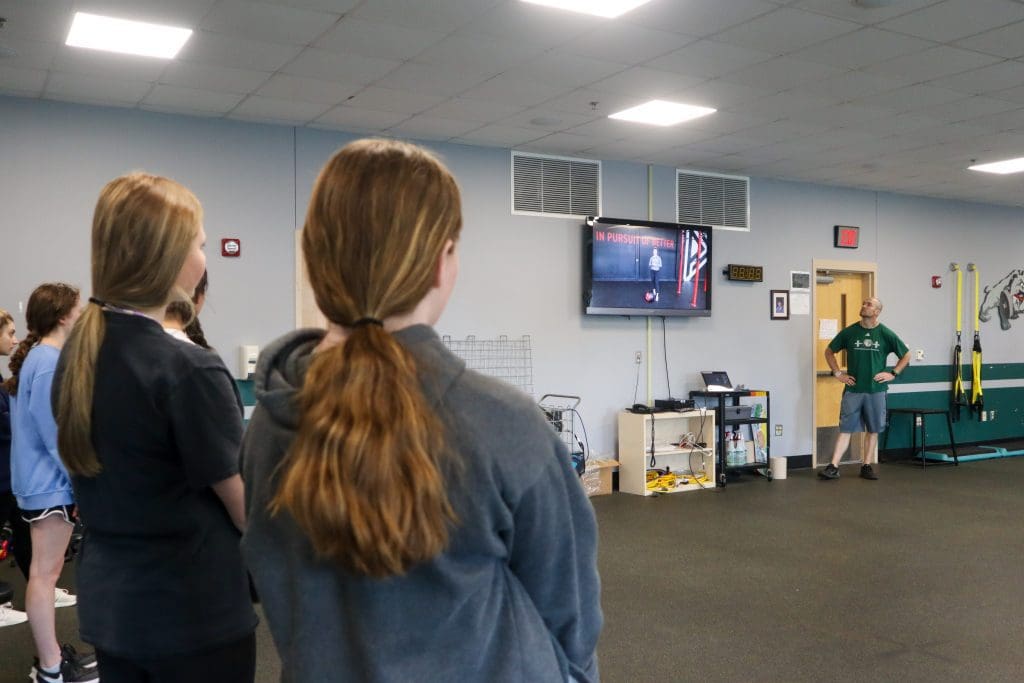
Key Takeaways On The Top 5 Benefits of Technology In The Classroom
Now that we have taken a deep dive into the top 5 benefits of technology in the classroom for pe, let’s wrap up.
Whether you are new to the profession, or a seasoned vet, being open to new learning solutions is an important aspect of being a teacher.
P.E. teachers have always been incredibly passionate about improving the health and wellness of their students, and put in a tremendous amount of time and effort to do so.
So while the thought of embracing technology can make some uncomfortable, we must be willing to at least approach the topic with an open mind. Maybe it won’t be the right solution for you. But maybe it will.
And if it does turn out to be an impactful education tool, isn’t that worth the risk of trying to use it?

